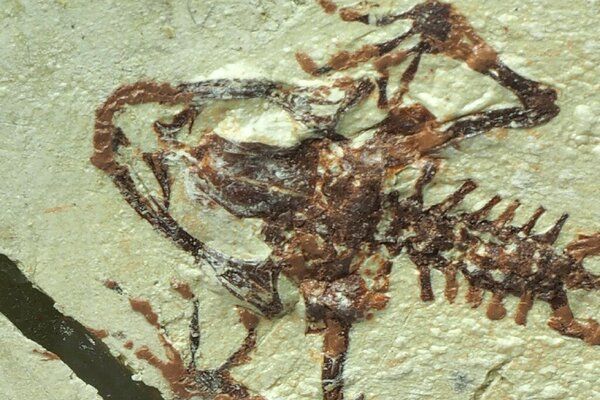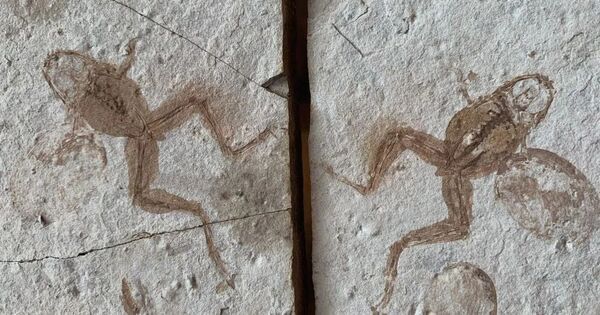Paleontologists at University College Cork (UCC) in Ireland have answered a century-old riddle about how some fossil frogs keep their fleshy parts: it’s all down to their skin.
Palaeontologists Daniel Falk and Prof. Maria McNamara, along with scientists from Ireland, Germany, and the United Kingdom, examined 45-million-year-old fossil frogs from the Geiseltal site in central Germany. Surprisingly, the fossils preserve whole body shapes of soft tissues. The scientists determined that the fossil frogs are in great condition because ancient skin remnants have been preserved.
The fossils were investigated using high-precision techniques such as scanning electron microscopy, synchrotron X-ray analysis, and infrared spectroscopy. These procedures did not exist when the fossils were discovered in the early twentieth century.
This discovery is very exciting because it overturns scientific opinion that has lasted for almost one hundred years. What’s more, the repeated pattern of fossil preservation tells us that frogs evolved special adaptations to life on dry land over 45 million years ago.
Prof. Maria McNamara
“The quality of preservation of the fossil frog skin is amazing – even subcellular structures, such as collagen fibres, are preserved.” said study lead, PhD researcher Daniel Falk. “The skin of the frogs is replicated in the mineral calcium phosphate, which helped it survive for millions of years.”
“The preservation of the skin is so good that we can even work out the habitat of the fossil frogs,” said Daniel. “The preserved skin shows adaptations to prevent drying out, which suggests that these fossil frogs actually spent most of their time on land.”
“Fossil soft tissues often reveal hidden information about the biology of animals,” said senior author Prof. Maria McNamara. “We discovered that the fossil frog skin is preserved in the same way as fossil frogs from other sites in Europe.

“This discovery is very exciting because it overturns scientific opinion that has lasted for almost one hundred years. What’s more, the repeated pattern of fossil preservation tells us that frogs evolved special adaptations to life on dry land over 45 million years ago.”
Like current frogs, fossil frogs may have loved swimming in dirty ponds. Mud can aid to maintain moisture and prevent skin from drying out. Some ancient frogs may have released natural oils from their skin glands, serving as a protective barrier against external factors. Fossil frogs may have gone into hibernation to conserve energy and protect their skin from hard surroundings during colder months or dry spells.
The study emphasizes the value of historic fossil collections and the necessity to re-evaluate historic specimens using modern methods.
















